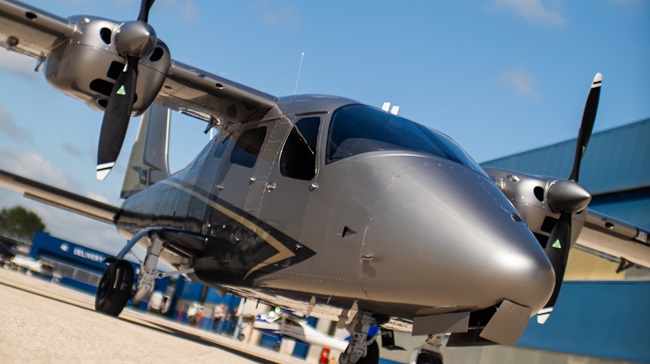Waypoints: Cub encounters
First time flying the iconic Piper airplane
/haines.jpg?w=250&h=234&as=1&hash=958B826B2A0AE4FFDC32BAFB33E6A89A)
With this being the seventy-fifth anniversary year for Piper Aircraft, its first model—the Cub—has been everywhere lately, including on the cover of this magazine. The Cub is the most iconic of all iconic GA airplanes. Many in the general public, when asked to name a “little” airplane, will come up with the Cub first—or that other iconic GA airplane, the Learjet.
My first exposure to the Cub came from stories my father tells of his youth. Growing up near the airport in Clarion, Pennsylvania, he and his friends used to sneak onto the airport and play in a wrecked Cub fuselage. Apparently some hapless student had crashed the airplane nearby, shearing off the landing gear. The neighborhood kids quickly adopted it, even equipping this “fighter” airplane with toy rifles to fend off the enemy. My father says he logged many hours in that cockpit.
My first actual encounter with a Cub wouldn’t occur until a couple of decades after I first heard those stories. I was a newbie associate editor at AOPA Pilot in the summer of 1988 (back when this magazine represented the entirety of our media properties). Stuart Millar had just bought Piper from Forstmann Little—the entrepreneur seemingly riding in on a white horse to rescue the company long neglected by its private-equity owners. The strident Millar was like a televangelist from the moment he took over Piper, vowing to turn his “junkyard dog” pack of attorneys loose on those filing frivolous product liability lawsuits against the struggling company, rolling back prices to spur languishing sales, and putting the Super Cub back into production. At Sun ’n Fun that year, Millar rallied the crowd of pilots downtrodden by GA’s tough times. (Sound familiar?)
That summer, Richard Collins, then editor in chief of Pilot, and I flew to Piper’s Vero Beach, Florida, headquarters in his Cessna P210 to check out the newly reintroduced Super Cub. We launched on the photo mission at dawn the next day, flying behind an old Saratoga that served as a photo platform. Photographer Mike Fizer, even newer to the staff than I was, was shooting from the ’Toga’s doorless cabin.
This was all heady stuff to a kid in his mid-20s who had been with AOPA only a few weeks. After we finished the photo mission, Collins allowed me to fly the Super Cub for a few minutes—my first time flying an airplane with a stick, first time flying a tailwheel airplane, first time flying a tube-and-fabric airplane. My, how green I was.
One of the images from that shoot wound up as the cover of the 1989 edition of AOPA’s Handbook for Pilots. I still chuckle whenever I see it, as Collins and I are wearing dress shirts and ties—in a Cub on a warm Florida day. How out of character that seems, but, hey, that’s how we all dressed in those days.
A few years later I had a more intimate relationship with a J–3 Cub when I got checked out in one owned by another AOPA employee. Unfortunately, before I could fly it myself after the checkout, someone crashed it in a field, destroying the wing and totaling the airplane. The pilot walked away. While the airplane was officially listed as destroyed, my guess is that parts of it are still flying today.
Over the years, I’ve had numerous other encounters with Cubs, all of them pleasant and memorable.
Millar’s big plans for the company proved to be but a footnote in Piper’s storied history. The financial troubles continued and the Super Cub quickly went back out of production. However, the little yellow airplane inspired a plethora of other designs, including the now popular Aviat Husky and a den full of Cub-alike Light Sport airplanes.
Truly, few GA airplanes can claim to be as influential as the Cub—on the aircraft industry, training market, the public, and a young associate editor.
Piper—thanks for the memories and best to you for another 75 years. Now, how about a rebirth of the J–3—an original LSA?
E-mail the author at [email protected]; follow on Twitter: tomhaines29.


